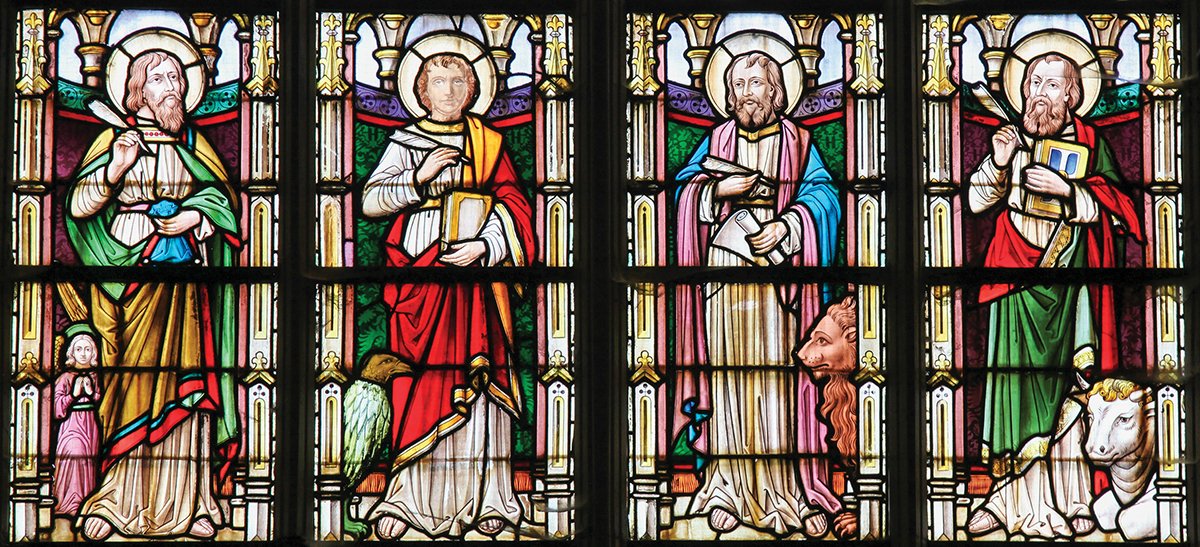The four Gospels are amazingly complex portraits of the Son of God. Each account verbally “paints” its subject from many different angles, capturing different aspects of the gospel just as a cut and polished precious stone catches and reflects light differently from its many facets.
One of those aspects of the good news is the way Jesus is shown to relate to us in time. We often do not think about it, but time was part of the announcement of the gospel. Mark tells us that Jesus proclaimed, “The time has come. . . . The kingdom of God has come near. Repent and believe the good news!” (1:15). Luke also shows this: “The Law and the Prophets were proclaimed until John. Since that time, the good news of the kingdom of God is being preached” (16:16). Luke even portrays Jesus criticizing the people of Jerusalem precisely “because you did not recognize the time of God’s coming to you” (19:44).
In fact, the gospel of Jesus Christ cannot be separated from time. Each of the four Gospels gives a different perspective on this.
Gospel from the past
This dimension of time is particularly easy to see in Matthew’s account, which is deeply rooted in the past. Matthew continually looks back to what was written in the Hebrew Scriptures, to the prophecies and promises of the Messiah who would come. In fact, there are some 70 references in the Gospel of Matthew that are cited from the Old Testament.
This is an astonishing number of citations for the size of the book, and a number that far outstrips the quotations from the Old Testament found in all the other Gospels. Matthew could even be called the Gospel of Fulfillment, as he continually tells us that actions or events in the life of Jesus occurred that it “might be fulfilled” or “was fulfilled” (1:22; 2:15, 17, 23; 4:14; 8:17; 12:17; 13:35; 27:9, 35, NKJV). And as Jesus said in His own words, “Do not think that I have come to abolish the Law or the Prophets; I have not come to abolish them but to fulfill them” (5:17).
Even apart from the many examples of fulfilled prophecies of the past, Matthew frequently uses the expression “It is written.” Again, this directs his readers back to the past and to the evidence of Jesus’ identity as the promised Christ. It also shows them how rooted the teaching of Jesus was in the bedrock of Jewish culture and biblical law (cf. 4:4, 7, 10).
Interestingly, Matthew often does not arrange his material chronologically. He simply organizes it by topic. In this fact we see again the importance in his Gospel not of how things happened in the present but of how the events that occurred fulfilled the words of the past.
Matthew points us to the past to better see the gospel of the One promised there.
Gospel in the now
Mark’s Gospel is firmly set in the present in that it does not continually appeal to past prophecies as Matthew’s account does, but looks more directly at Jesus’ deeds in the here and now. In fact, “here and now” perfectly summarizes the stress on time in Mark. This Gospel not only stays within the time of the actions recorded but also continually underscores the immediacy of Jesus’ actions “now.”
For example, Mark tells us (emphases added) that at the onset of Jesus’ ministry “At once the Spirit sent him out into the wilderness” (1:12); “At once they left their nets and followed him” (v. 18); “Without delay he called them” (v. 20); “news about him spread quickly over the whole region of Galilee” (v. 28). The pattern continues throughout Mark’s Gospel. The Greek word eutheos, translated “immediately,” “straight away,” “at once,” etc., occurs no fewer than 42 times in Mark. This and other terms of time give an immediacy to important events and even everyday actions in Jesus’ life. Mark constantly uses the historical present tense to show the dedication and non-stop work of Jesus.
Mark’s present-focused story of Jesus challenges us to live out our part in God’s calling by doing what we have been given to do — now.
Gospel of the future
Luke’s perspective often involves a focus on the future. For example, in his Gospel we find the continued use of the word will, as in “the Son of man will . . .” (cf. 9:26; 12:8, 10; 22:22, 69). We see how pronounced this pattern is when we realize that compared to Mark, which has 89 occurrences of will, Luke’s account uses this same word 243 times. In Matthew, the great majority of the instances of will occur in his citations of past prophecies that state, “Such and such will happen.” In Luke the emphasis is almost entirely on words spoken in the present, referring to future actions or events.
For example, Luke is unlike Mark’s account. Mark does not clearly separate Jesus’ return from the events of that age and the destruction of Jerusalem by the Romans in ad 70 (“But in those days, following that distress,” Mark 13:24). However, Luke more clearly projects Jesus’ return into the distant future by writing “Jerusalem will be trampled on by the Gentiles until the times of the Gentiles are fulfilled” (21:24).
Luke continues his future perspective of the gospel of Jesus in Acts. He begins this book with Jesus’ words, culminating in “You will receive power when the Holy Spirit comes on you; and you will be my witnesses in Jerusalem, and in all Judea and Samaria, and to the ends of the earth” (1:8). These future-looking promises are reinforced by the angelic message about Christ at His ascension: “Heaven must receive him until the time comes for God to restore everything” (3:21).
Luke continually points us to the future aspects of the gospel of Jesus.
Gospel of eternity
Just as John’s Gospel is different from the other three in many ways, so its perspective and focus on time are unique. First, John stresses the importance of time in Jesus’ ministry more than any other Gospel writer. His account may be divided into two halves: the ministry of Jesus (chapters 1-12) and the final few days of Jesus’ life (chapters 13-21). John bridges this division by the use of seven time markers regarding Christ’s “hour.” Three times in the first half of this Gospel we find some variant of the expression “My hour has not yet come” (2:4; 7:30; 8:20). Then, four times in the second half of the Gospel, we find variants of “The hour has come” (12:23; 12:27; 13:1; 17:1). But Jesus’ “hour” is always seen against the backdrop of eternity.
While the first three Gospels often focus on past, present, and future, respectively, John’s account utilizes a wider view. Just as his audience was a universal one, John’s perspective is an eternal one. Starting with “In the beginning” (1:1) and ending in an eternal future (21:22-25), the narrative is all-encompassing in its view of time. Throughout his Gospel John repeatedly points us to aspects of eternity. For example, the repeated emphasis on the kingdom of God in the first three Gospels is missing in John. Instead, John places continual emphasis on eternal life (3:15, 16, 36, et al).
John paints a portrait of Jesus as the Eternal One who came in love and truth, to call us to eternity.
Was, is, and is to come
The pattern of past-present-future-eternity found in the four canonical descriptions of Jesus’ life and ministry is so clear that we might wonder if the arrangement of the Gospels as we have them is more than coincidental. Could their order be part of the inspiration of how the gospel accounts have come down to us? We have no way of knowing, of course.
Whatever the case, the four Gospels do show that time is part of the gospel of Jesus Christ. Although God transcends time, He is nevertheless the one “who is, and who was, and who is to come” (Revelation 1:8). Perhaps that is why God has given us the gospel of Christ not at a single point of time but throughout time.
What is certain is that God places events in time the way a master jeweler places precious stones in their settings. They would not be so perfectly placed in any other manner. Different aspects of the gospel of Jesus Christ are placed in time in exactly that way.








